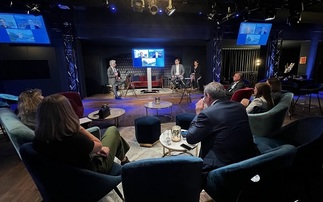Carrier O2 is to spurn Wi-Fi in favour of miniature GSM base-stations for converged fixed-mobile services
Picocells will work with existing handsets Mobile communications provider O2 will next year offer indoor, low-power GSM base stations connected via broadband as part of its fixed-mobile convergen...
To continue reading this article...
Join Computing
- Unlimited access to real-time news, analysis and opinion from the technology industry
- Receive important and breaking news in our daily newsletter
- Be the first to hear about our events and awards programmes
- Join live member only interviews with IT leaders at the ‘IT Lounge’; your chance to ask your burning tech questions and have them answered
- Access to the Computing Delta hub providing market intelligence and research
- Receive our members-only newsletter with exclusive opinion pieces from senior IT Leaders




















